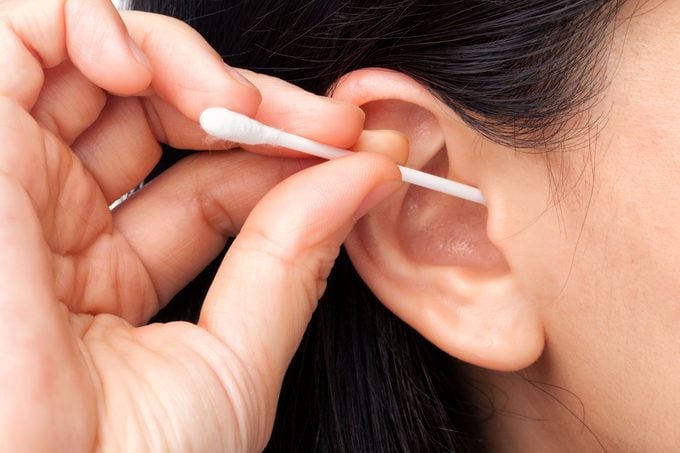What’s the Best Way to Clean Out Earwax—If You Can’t Use Q-Tips?
Updated: Apr. 11, 2020
Experts reveal how cleaning out earwax with a cotton swab could lead to some hearing loss, plus, the right way to remove it safely.

No one wants big gobs of earwax in their ears, but think twice before digging around with a cotton swab.
Sticking a Q-Tip—or any small object—into your ear can push the earwax back into your ear canal. (Keep your cotton swabs for these clever uses instead.) As the canal fills up, you could experience some hearing loss, or itching, ringing, and discomfort in your ears, says neurotologist Seth R. Schwartz, MD, medical director for the Listen for Life Center at Virginia Mason Medical Center in Seattle. And that wax could be building up more than you realize. “Even half the ear can be plugged with wax before people start to notice at all,” he says.
Why your body needs earwax
Your body needs earwax, so don’t poke too around for any that hasn’t made it outside your ear canal, says Erich Voigt, MD, clinical associate professor with the otolaryngology department at NYU Langone Medical Center. “The ear canal is a sort of dark, warm, and moist cavity,” he says. “And any areas that are dark, warm, and moist can become an incubator for germs.” The wax prevents water from building up in your ear, keeping germs, mold, and fungus out, he says.
Constantly scraping earwax from your inner ear means removing that protection. “You lose the protective coating,” says Dr. Voigt. “The skin might have tiny scratches, and the germs that like the dark, warm, and moist start multiplying.” You’ll be at higher risk of an outer ear infection—one of the most painful infections you can get, he says. If that happens, try one of these ear infection home remedies.
How to effectively remove earwax excess
If earwax is bothering you after you remove most of the outside wax in the shower, a hot shower can help. It happens to be an ideal place to attack the excess, according to Dr. Schwartz. “The wax tends to liquefy because it absorbs water,” he explains. “If you wipe your ear, it’s a whitish, soft consistency.” After your shower, wipe the earwax away with a dry washcloth or tissue, he suggests. Anything you can’t reach easily with your finger is still protecting your ear. You could also use eardrops to soften the wax.
See your doctor if wiping wax away at home doesn’t help, or if you think you pushed some back into your ear. A physician can help remove it or identify any other conditions. “Some people think they have earwax but actually have underlying hearing loss,” says Dr. Schwartz.
Next, read the 7 things earwax can reveal about your health.